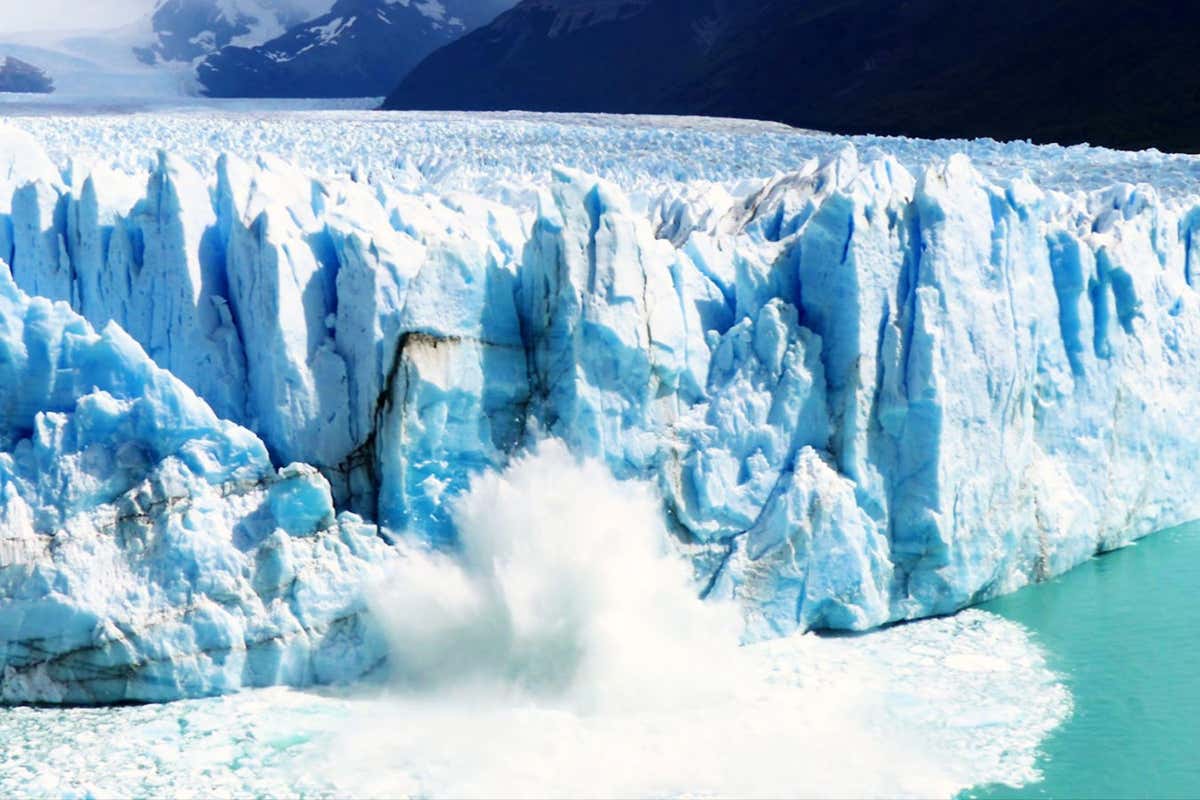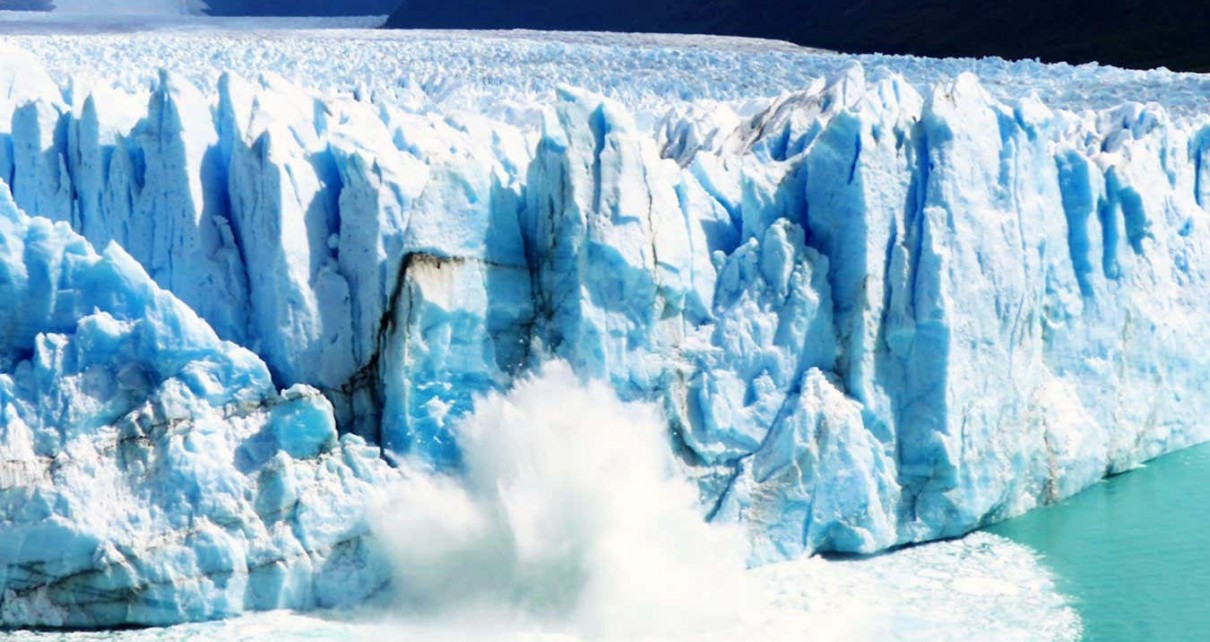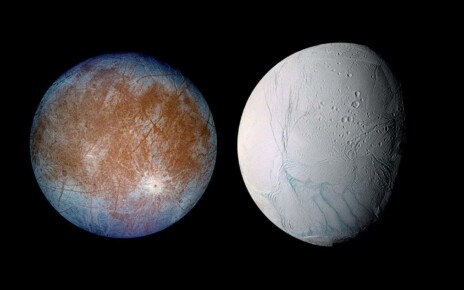[ad_1]

A huge chunk of glacier ice collapsing and falling into the sea
Juan Maria Pazos / Alamy
In recent years, there have been many unprecedented events in Antarctica, from low levels of sea ice to record-breaking heatwaves and the collapse of ice shelves. It is virtually certain that even more extreme events will happen and become common, with consequences including accelerating ice loss that leads to coastal flooding around the world. That’s the conclusion of a review of recent extreme events in Antarctica by Martin Siegert at the University of Exeter, UK, and his colleagues.
“I started doing Antarctic research 30 years ago and none of these things were relevant at all,” says Siegert. “Surprised is one way of putting it, shocked is another.”
For instance, in March 2022 temperatures up to 38.5°C higher than normal were recorded three kilometres up on the ice sheet in the interior of East Antarctica – the most extreme temperature anomaly ever recorded. If this kind of anomaly occurred during summer in England, the temperature in London would hit 60°C, Siegert says.
Because it’s normally around -50°C in March in this part of Antarctica, the temperature did not rise above freezing, but if this kind of anomaly occurred during the continent’s summer, it would cause ice to melt deep in the interior, he says. The immediate cause of the event was a river of warm, moist air from Australia. Normally the circular winds around Antarctica, known as the polar vortex, keep out warm air from the north, but in this case the warm air penetrated deep into the interior, Siegert says.
The formation of sea ice around Antarctica had been defying expectations, hitting a record high in winter 2014. But since then, much less sea ice than usual has been forming each winter, reaching a record summer low in 2017. That record was broken in 2022 and smashed this year. “The new record that was set this July was three times further away from the average than what we’ve seen previously,” says Caroline Holmes at the British Antarctic Survey. “And even the years [since 2015] that haven’t been record-breaking have been unusual. We’re really seeing a change in Antarctic sea ice.”
Then there are the ice shelves, formed by glaciers flowing into the sea rather than sea water freezing, as with sea ice. The massive floating ice shelves around much of Antarctica help hold back the ice on land, but they are shrinking. “We’ve seen dramatic changes in the extent of ice shelves around Antarctica,” says Anna Hogg at the University of Leeds, UK. In several cases, they have collapsed altogether. After the Larsen B ice shelf collapse in 2002, the glaciers behind it sped up eight times, Hogg says.
What’s more, extreme events of one kind can increase the likelihood of others. For instance, warmer air reaching Antarctica can reduce sea ice and cause surface melting. “The warm weather…is causing unprecedented surface melting and melt ponding on the ice sheet itself,” says Hogg. This water can flow through crevasses to the base of glaciers, lubricating them and speeding their flow.
On ice shelves, melt water can deepen cracks and, contribute to icebergs breaking off and completely collapsing. “We’re deeply concerned about the increasing frequency and intensity of extreme events, and the cascading influences that they have,” says Siegert.
This matters to people worldwide for two reasons, he says. Firstly, Antarctica is a colossal store of ice whose melting is resulting in more and more sea level rise each year. Secondly, its white surface helps cool Earth by reflecting energy back into space, but now white ice or snow is being replaced by darker sea or land. “There’s a real danger in the years ahead that Antarctica stops acting as a refrigerant for the planets and starts acting as a radiator,” says Siegert.
The fact that there are few weather stations in Antarctica and that records do not go back very far can make it hard to be certain that individual extreme events are the result of global warming, according to the researchers. But some events, such as the 18.6°C at Esperanza Station in 2020 – the highest temperature ever recorded in Antarctica – have been shown to be made more likely by global heating and it is reasonable to assume this is the case for the other extreme events, Siegert says. “It’s difficult to project to the future,” he says. “But this unfortunately is exactly what we’d be expecting to see on track to a worst-case scenario of ice sheet instability.”
Topics:
[ad_2]
Source link




